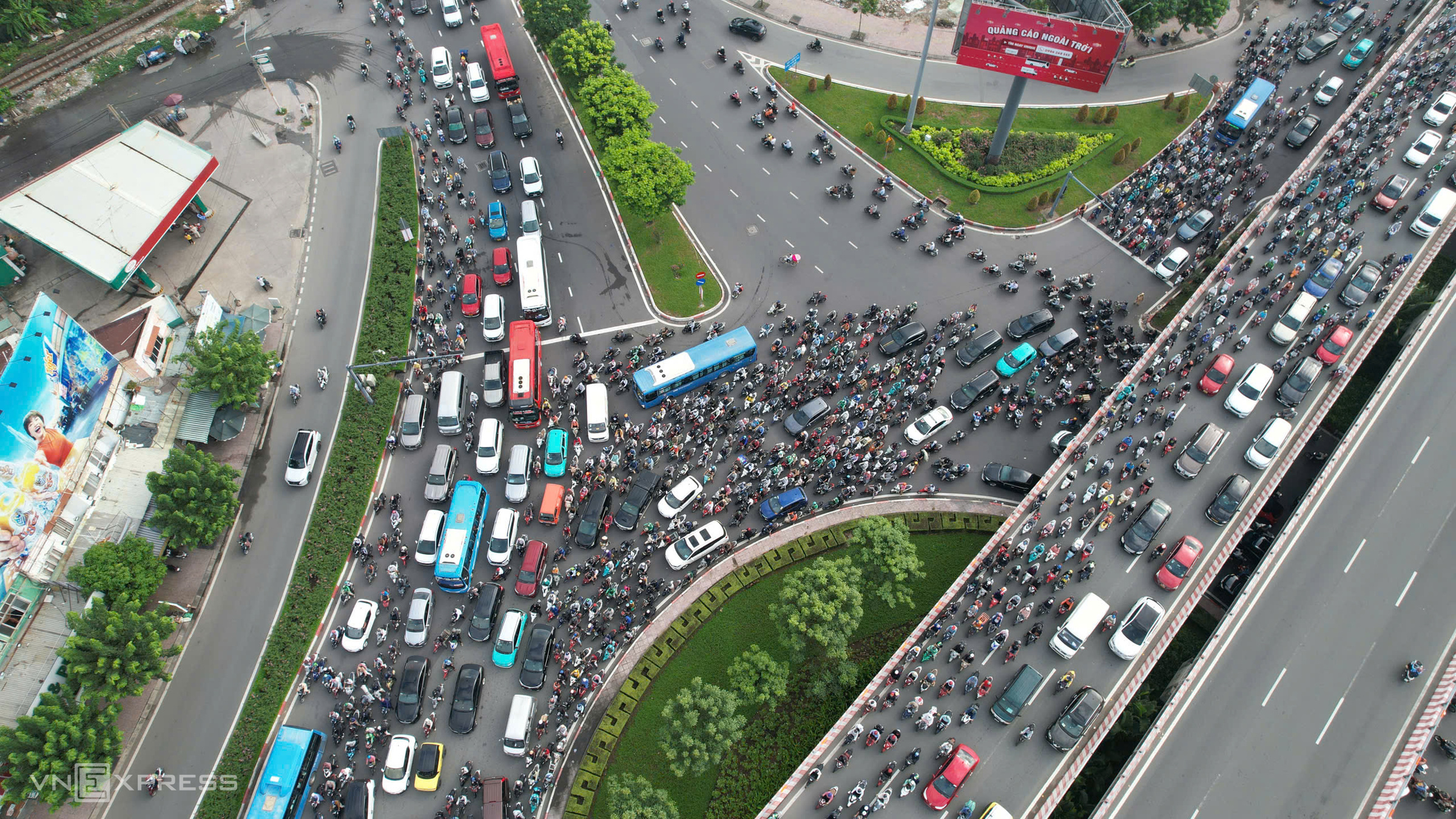 |
At 7 a.m., the roundabout near the Binh Trieu intersection, where National Highway 13 meets Pham Van Dong Boulevard, was gridlocked as vehicles inched toward Binh Trieu 2 Bridge to enter the city center.
These main roads connect Thu Duc City and Binh Duong with the city center via the Eastern Bus Station. Already congested during peak hours, traffic intensified after cars were diverted from Binh Trieu 1 Bridge to the parallel Binh Trieu 2 Bridge.
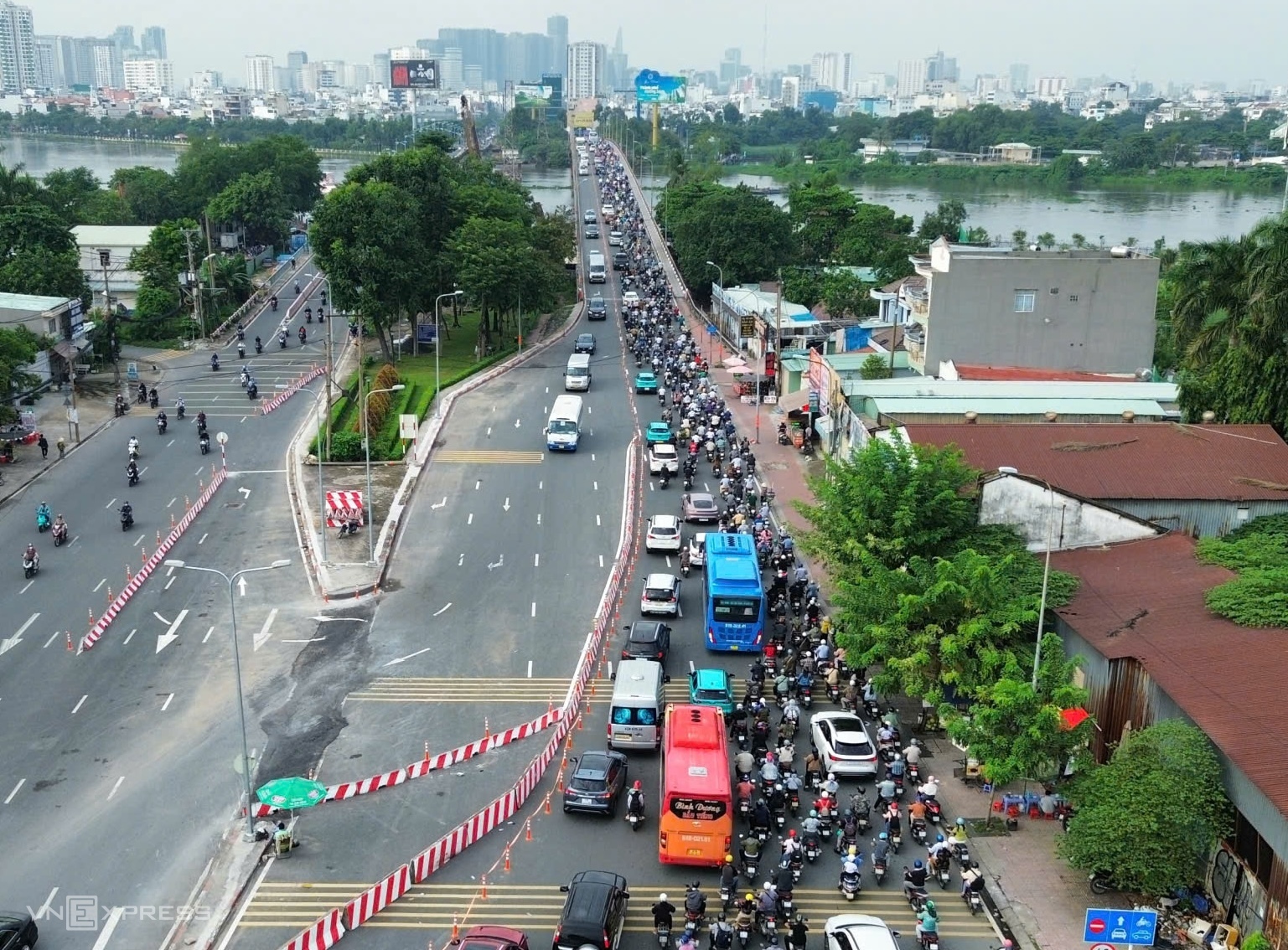 |
Traffic crawls across Binh Trieu 2 Bridge into Ho Chi Minh City.
The traffic rerouting, implemented on Monday afternoon, is expected to last for over three months, until the end of November, while the Binh Trieu 1 Bridge undergoes clearance improvements.
During this period, all cars are prohibited from using Binh Trieu 1 Bridge and are directed to Binh Trieu 2 Bridge. This bridge currently accommodates two-way traffic, with a 3.5-meter lane dedicated to cars exiting the city center toward Binh Trieu intersection. The remaining two lanes carry traffic into the city.
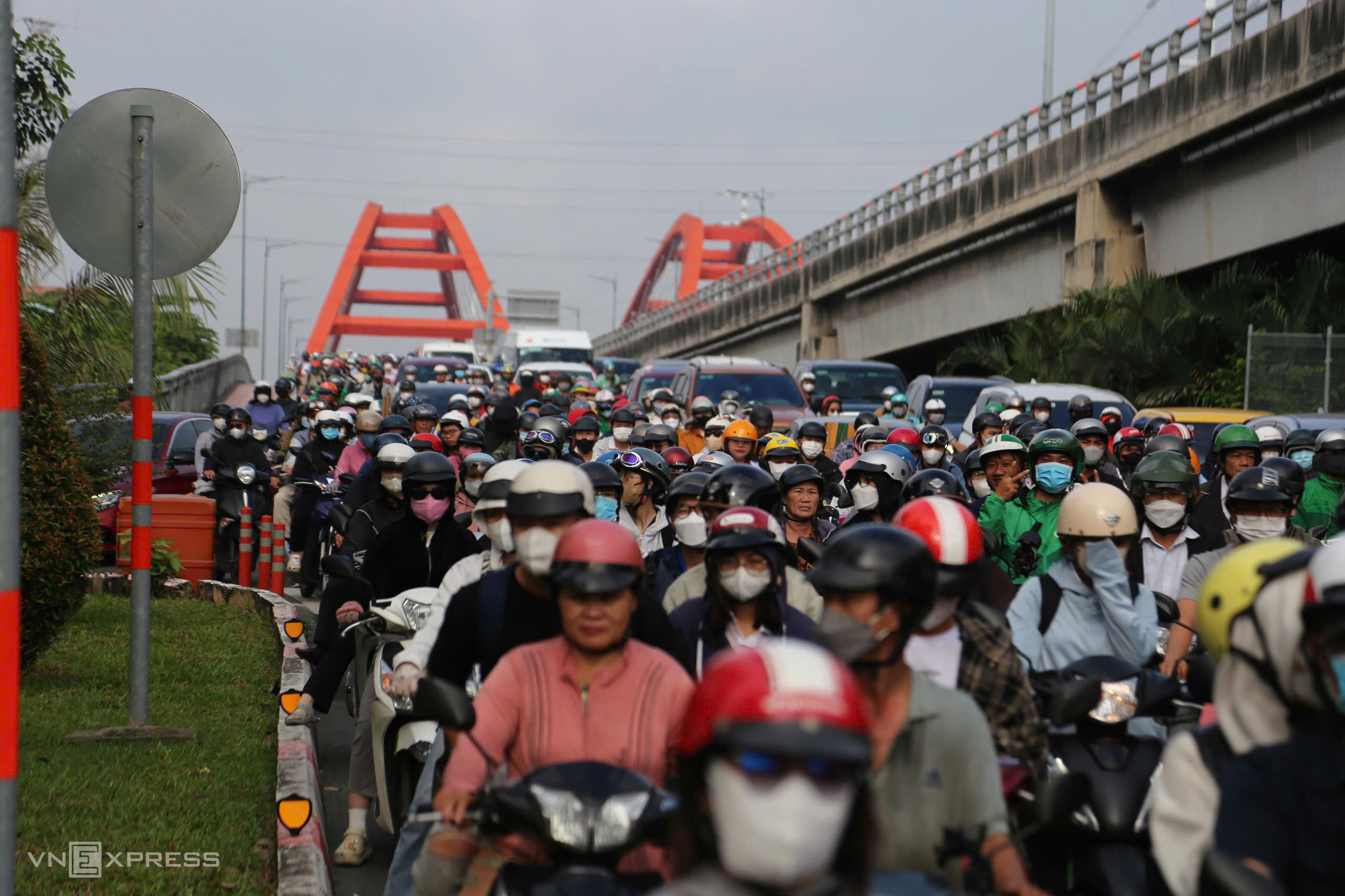 |
Thousands of commuters from Pham Van Dong Boulevard turning onto the roundabout near Binh Trieu intersection encountered heavy congestion during Tuesday morning's rush hour. (Photo provided)
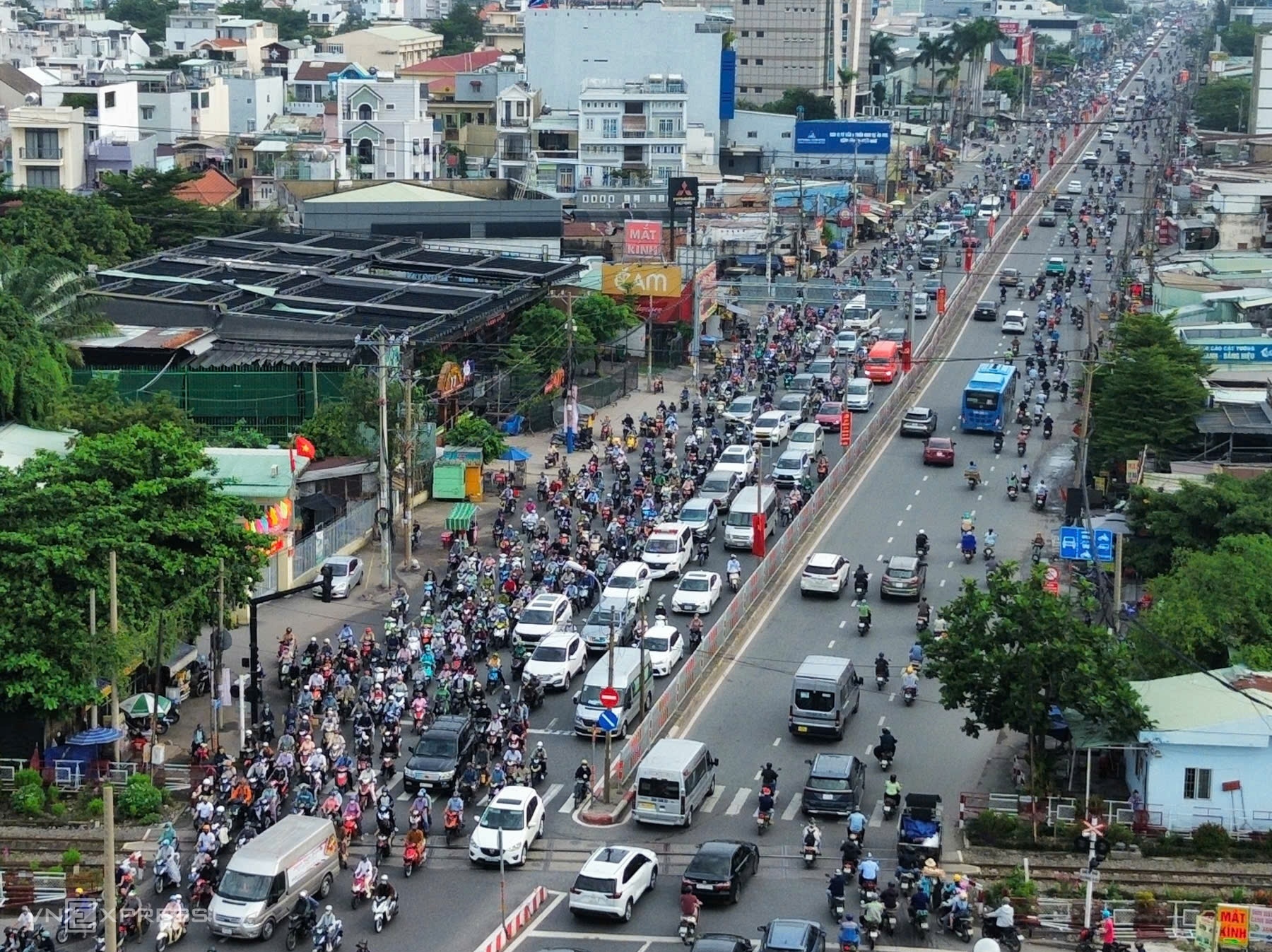 |
National Highway 13 near Binh Trieu intersection also experienced significant congestion. This area is a traffic hotspot in Ho Chi Minh City and is awaiting the implementation of a BOT (Build-Operate-Transfer) expansion project. (Photo provided)
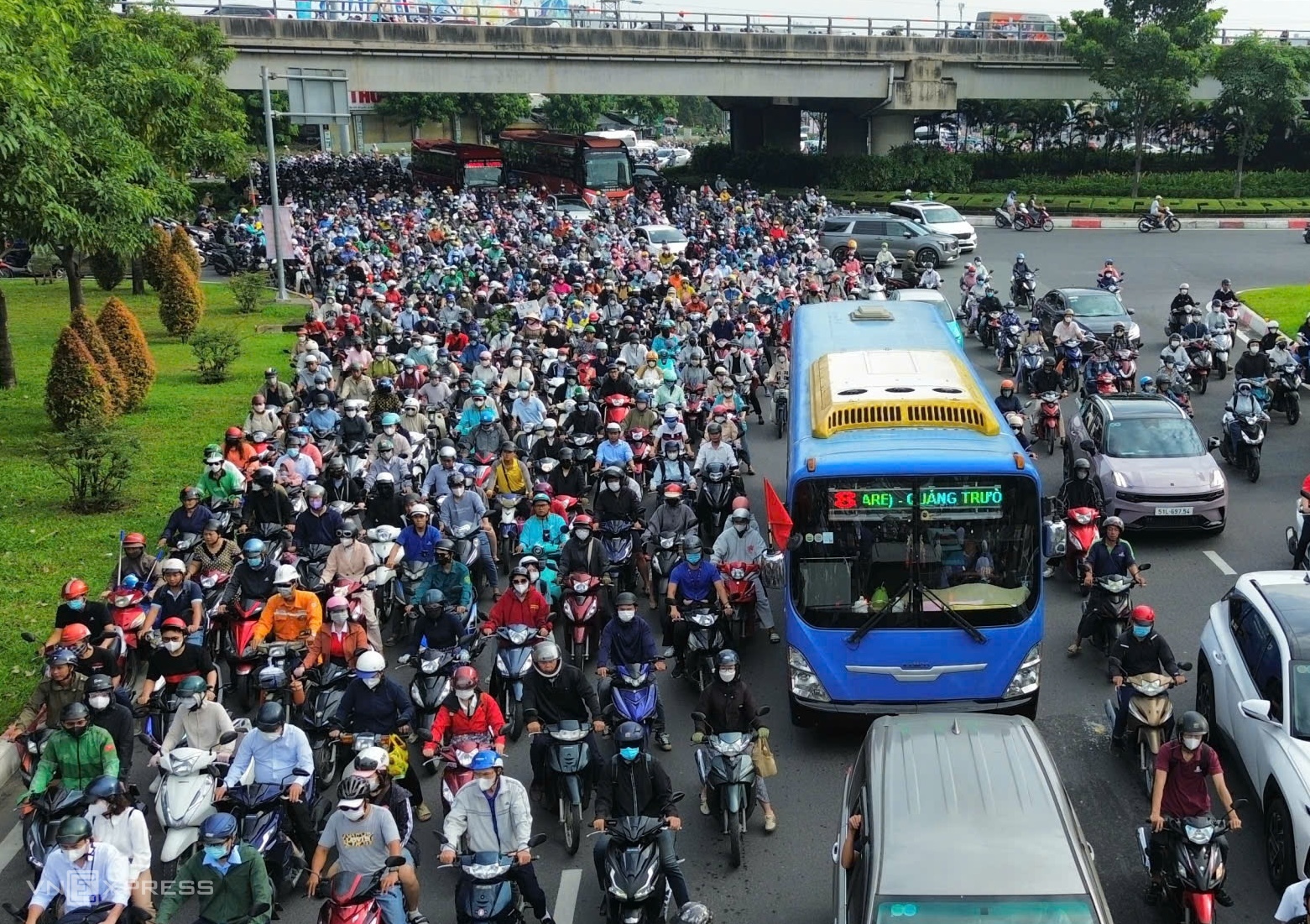 |
Vehicles inch forward toward Binh Trieu 2 Bridge. (Photo provided)
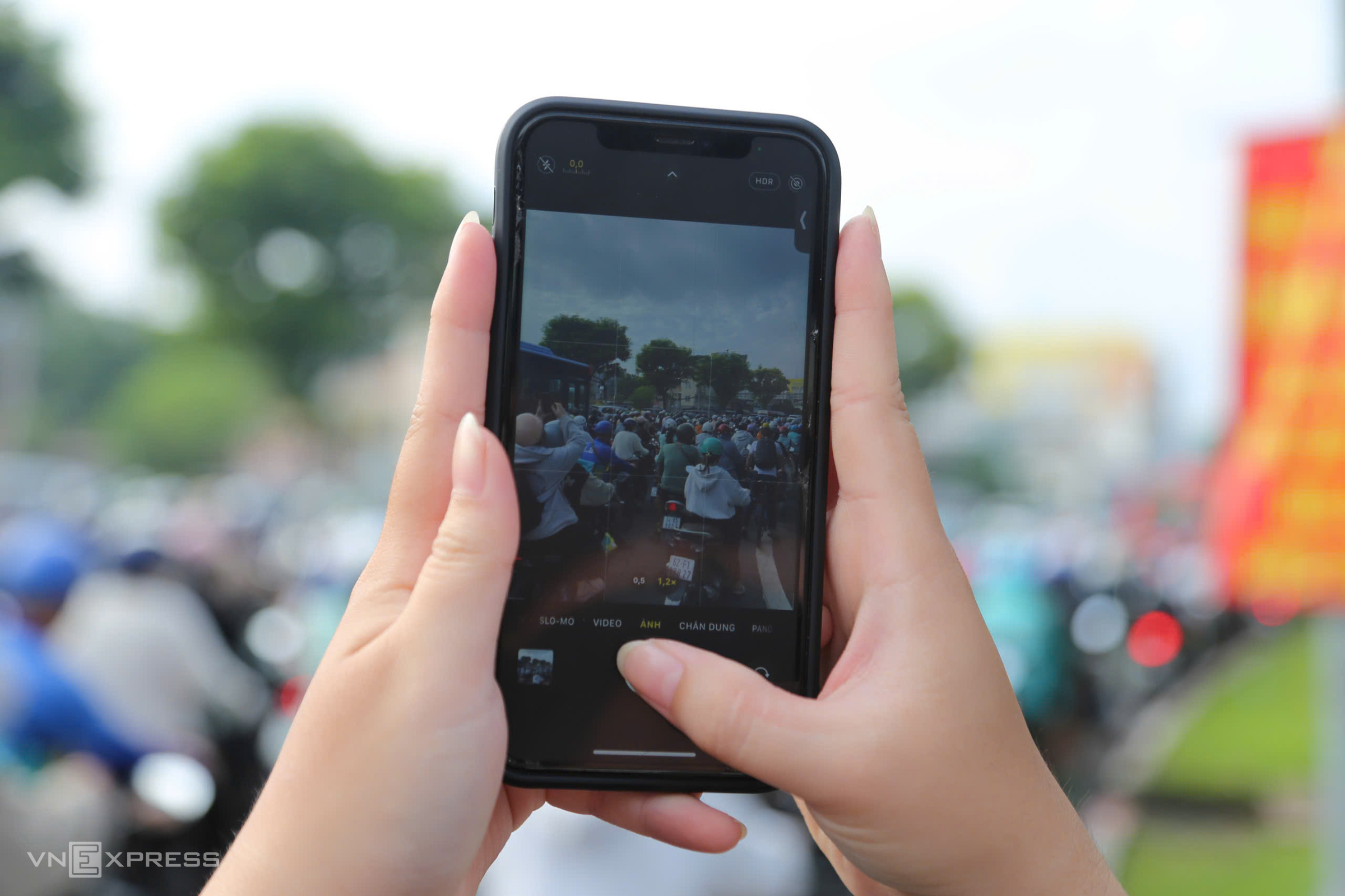 |
Phuong Nhi photographed the traffic jam to inform her company of her delay. While aware of the Binh Trieu 1 Bridge closure and anticipated traffic disruptions, she hadn't foreseen such extensive congestion. "From now on, I'll have to leave 30 minutes earlier to compensate for the extra travel time," she said. (Photo provided)
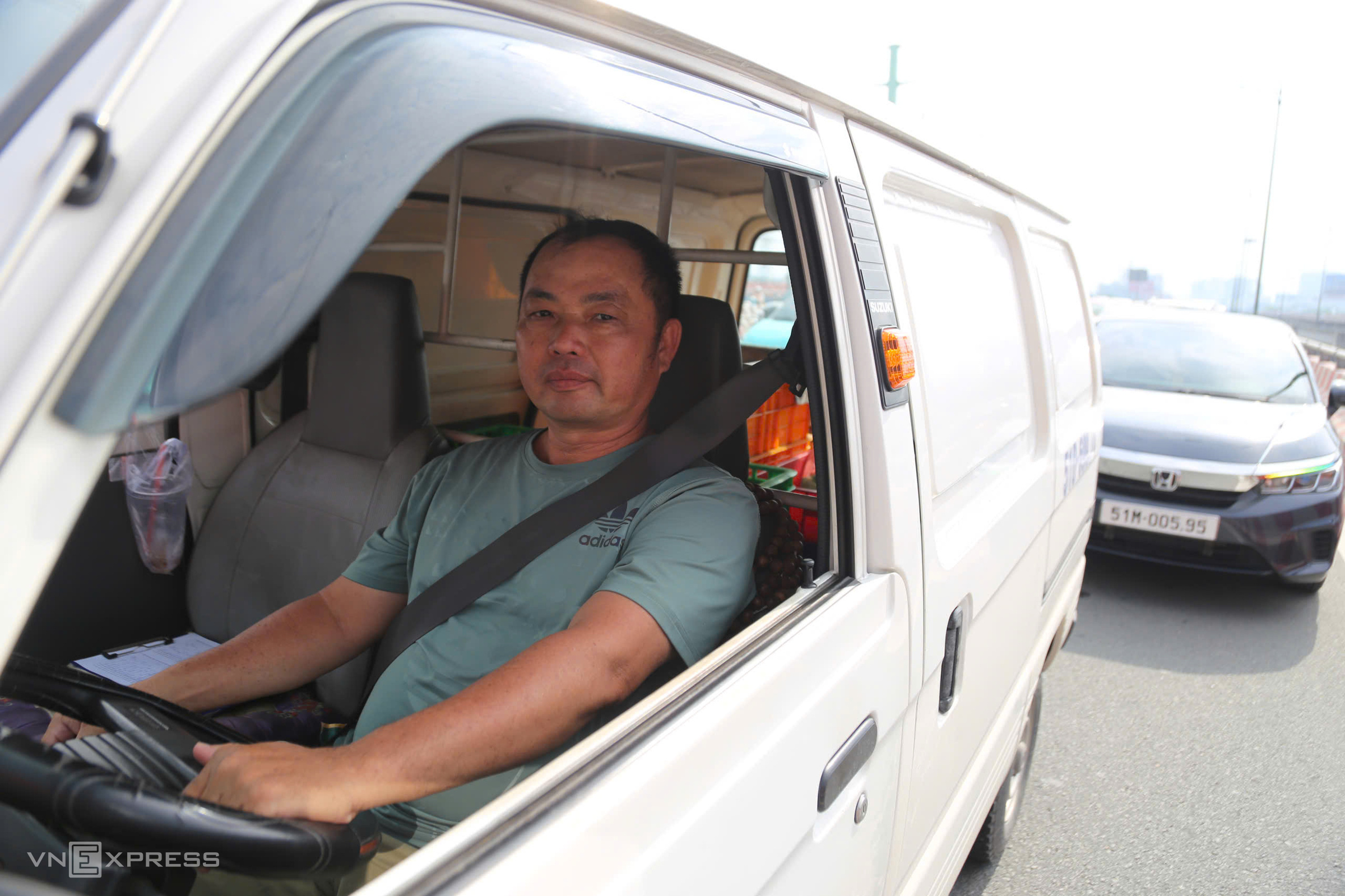 |
Minh, a truck driver transporting goods from Linh Xuan Export Processing Zone to Thong Nhat Stadium (formerly District 10), was stuck on Binh Loi Bridge for an extended period.
"Binh Loi Bridge is less than 300 meters long, but this morning it took me 30 minutes to cross it," he said.
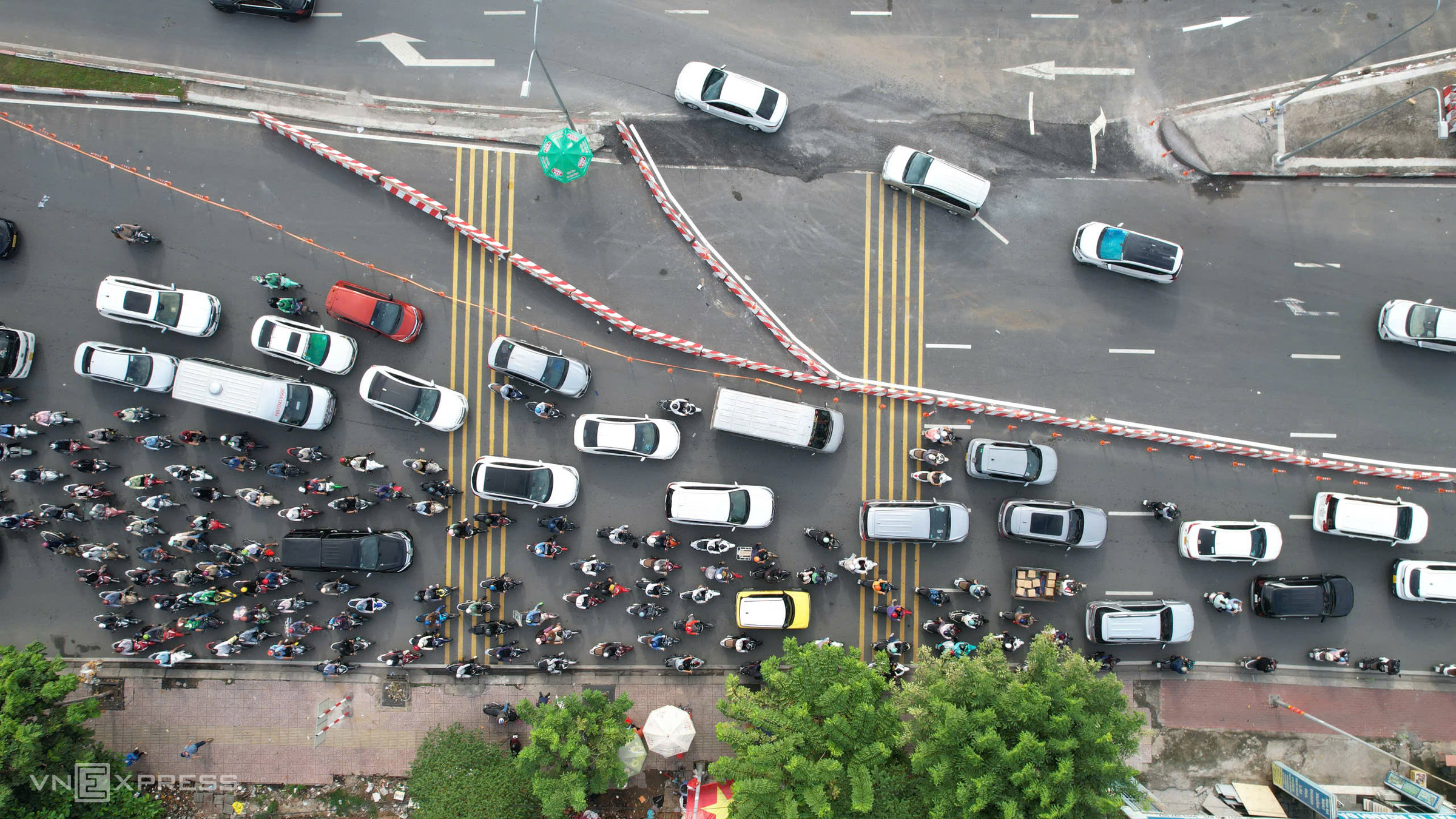 |
Before closing Binh Trieu 1 Bridge to cars, the park area beneath the bridge was modified to provide access to Binh Trieu 2 Bridge. Traffic cones were placed at both ends of the bridge to separate motorcycle lanes and mitigate congestion. (Photo provided)
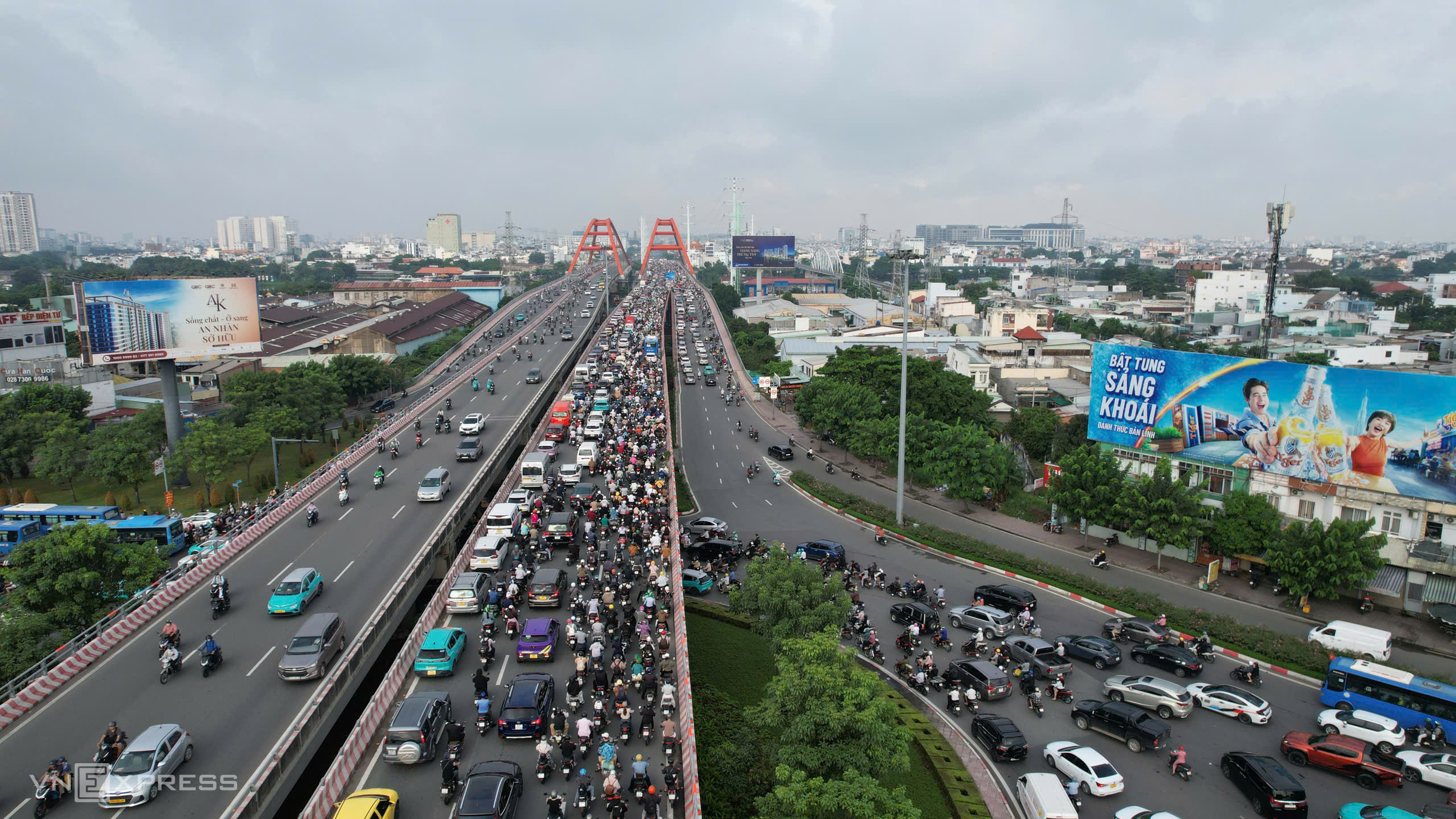 |
Traffic jam on Pham Van Dong Boulevard, section over Binh Loi Bridge.
To avoid congestion, many commuters diverted from National Highway 13 to Binh Loi Bridge, using the Pham Van Dong - Nguyen Xi intersection to enter the city center. However, the high volume of vehicles converging on these routes during peak hours resulted in widespread congestion.
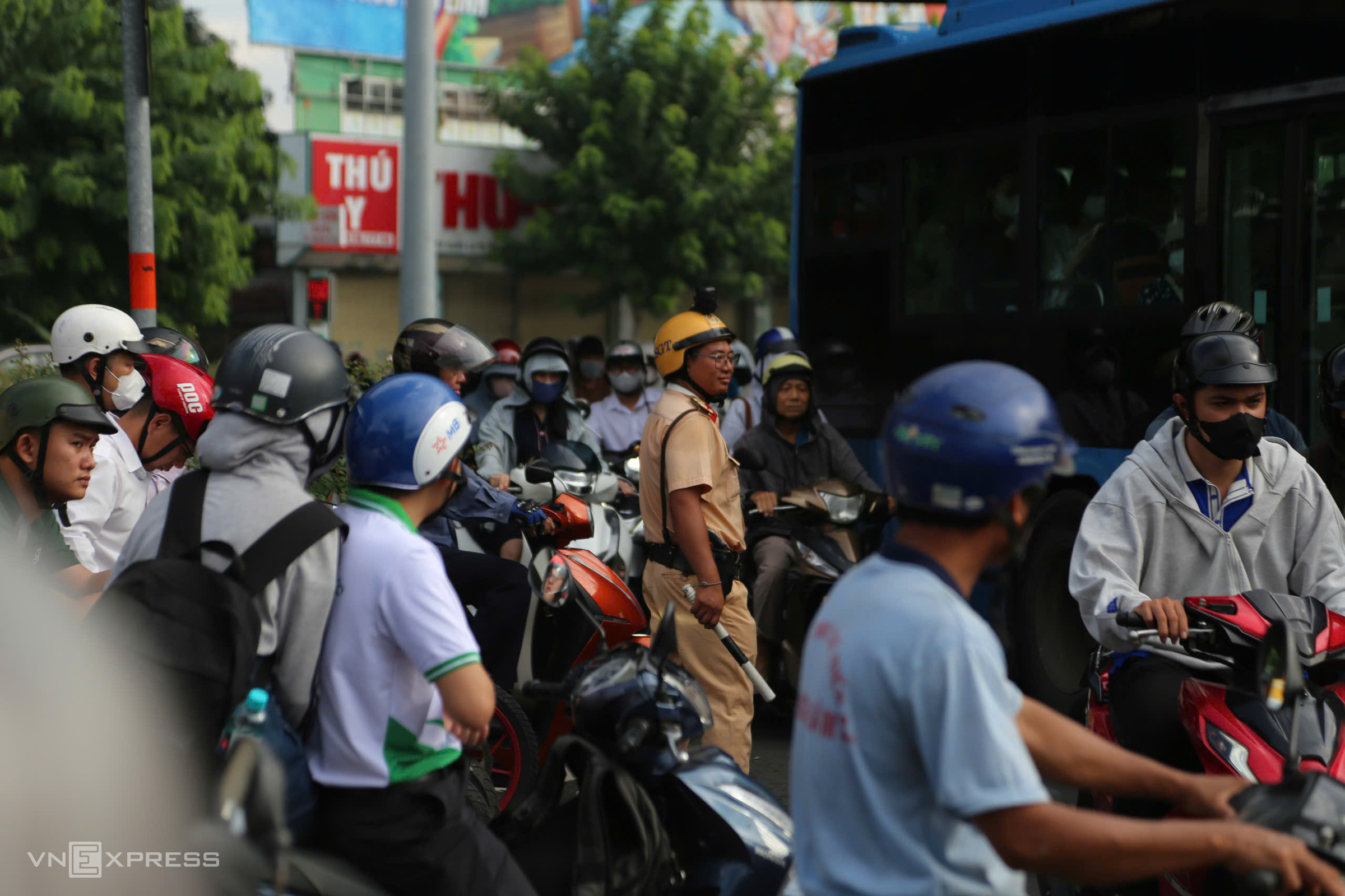 |
Traffic police officers from Binh Trieu Traffic Police were stationed at key intersections to manage traffic flow. They adjusted lanes on National Highway 13, the exit from Binh Loi Bridge, and the route from the old Eastern Bus Station back to National Highway 13. However, the sheer volume of traffic continued to cause significant delays. (Photo provided)
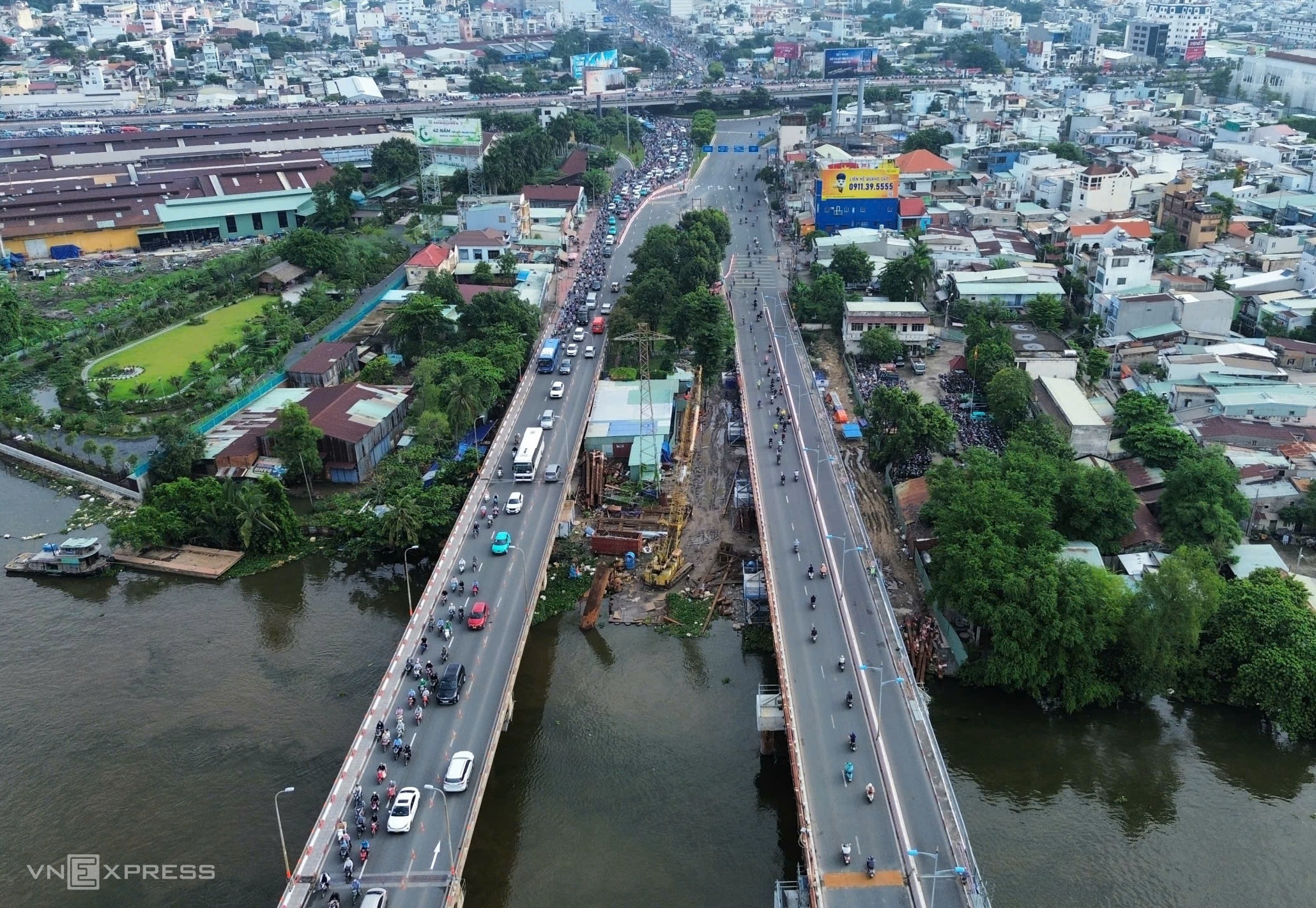 |
Binh Trieu 1 Bridge (right) and Binh Trieu 2 Bridge span the Saigon River, situated on National Highway 13, connecting the eastern districts to the city center. Binh Trieu 1 Bridge, built before 1975, carries one-way traffic from the city center toward Thu Duc City. Despite repairs in 2010, its low clearance restricts larger vessels.
The Binh Trieu 1 Bridge clearance improvement project, with a budget of 133 billion VND, commenced in late 2024. Approximately 5 km away, Binh Phuoc 1 Bridge on National Highway 1 is also undergoing clearance improvements, with a budget of nearly 112 billion VND.
Dinh Van












